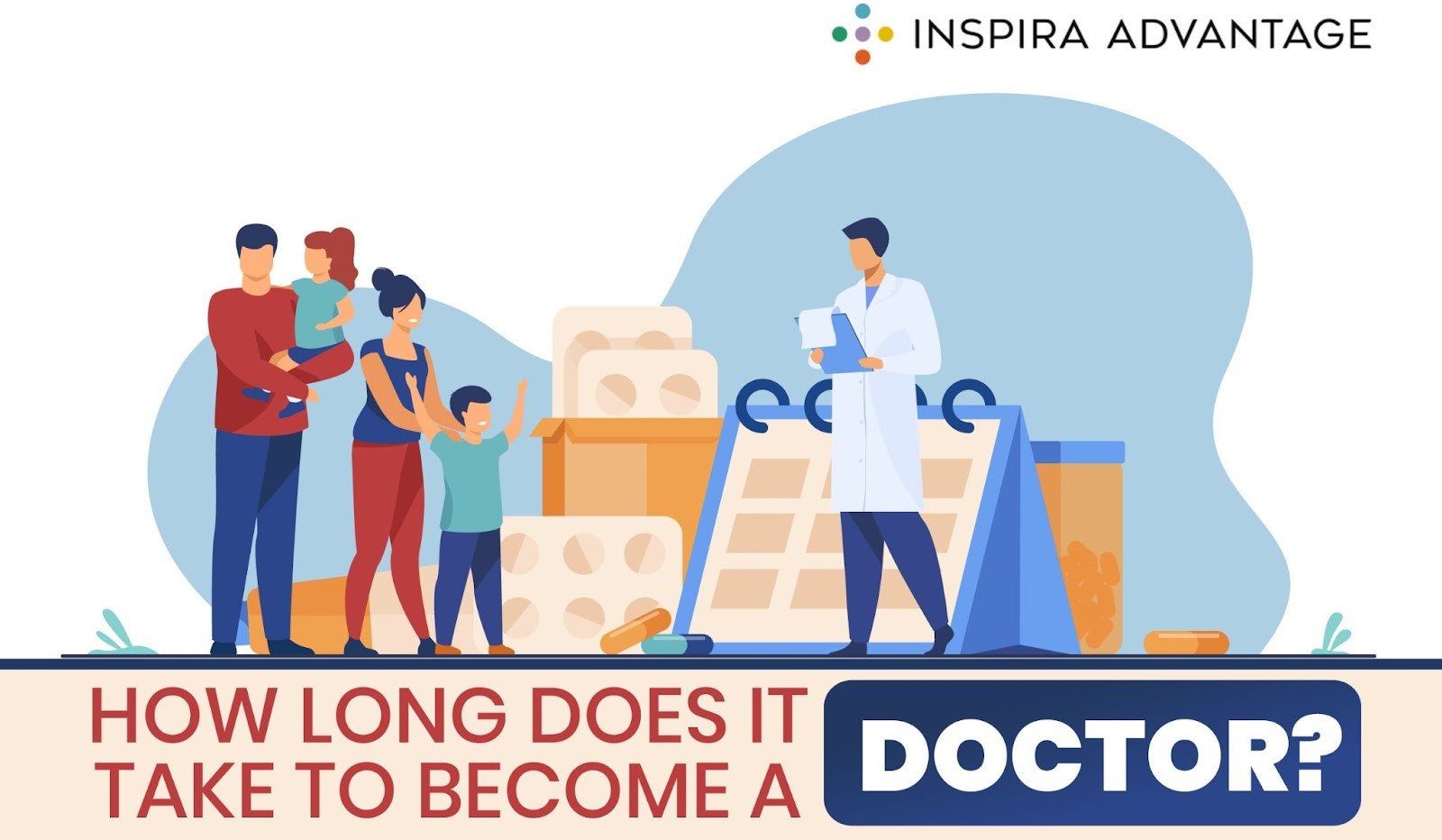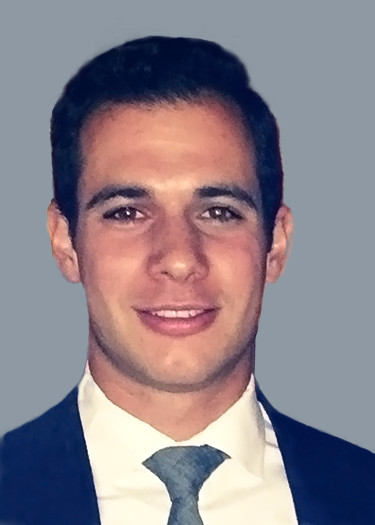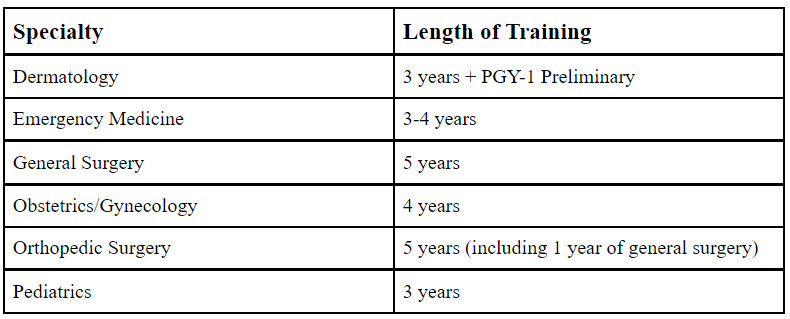So, you’re driven to become a doctor. That’s fantastic! It’s a challenging but incredibly rewarding path. One of the first big questions aspiring doctors ask is: “How long will this journey actually take?” The answer isn’t always straightforward, as it depends on several factors, especially the medical specialty you choose. However, you should expect to dedicate a significant portion of your life – typically at least 11 to 12 years – to rigorous education and training before you can independently practice medicine. Let’s break down the typical timeline to become a doctor.
 A doctor in a white coat talking to a family, with text overlay "How Long Does It Take to Become a Doctor?"
A doctor in a white coat talking to a family, with text overlay "How Long Does It Take to Become a Doctor?"
The journey to becoming a doctor generally involves these key stages:
- Completing high school
- Earning a bachelor’s degree
- Finishing medical school (MD or DO program)
- Completing a residency program
The total time can vary based on your chosen specialty and individual path. Let’s explore both traditional and non-traditional routes to medical school to understand how these can influence your timeline.
Traditional vs. Non-Traditional Routes to Medicine
The path to becoming a doctor isn’t one-size-fits-all. Students approach medicine from different starting points, leading to what are often described as traditional and non-traditional routes.
The Traditional Medical School Route
The traditional route is generally for students who decide early in their academic career – often during high school or early college – that they want to become doctors. These students typically plan their undergraduate studies to fulfill pre-medical requirements and apply to medical school during their junior or senior year of college. For these students, the transition from undergraduate studies to medical school can be seamless, starting medical school shortly after college graduation.
Many students on the traditional route might opt to take a gap year or two between college and medical school. This time can be used to strengthen their medical school applications, prepare for the MCAT, gain clinical experience, or simply take a breather before the intense journey of medical school begins. Taking a gap year is now so common that it’s considered within the traditional pathway.
The Non-Traditional Medical School Route
The non-traditional route encompasses a wider range of paths to medicine. This often includes students who decide to pursue medicine later in their academic or professional lives. Non-traditional students may not have initially completed pre-medical coursework during their undergraduate degrees. They might be career changers from completely different fields, or individuals who initially pursued other paths before realizing their passion for medicine.
For those on a non-traditional route, the timeline to becoming a doctor can sometimes be longer. They may need to spend time completing prerequisite coursework, gaining relevant experience, and preparing for the medical school application process, including the MCAT. However, the diverse experiences and perspectives that non-traditional students bring to medicine are highly valued.
Steps to Take Before Medical School
Before you even apply to medical school, a significant amount of preparation is required. This pre-med phase is crucial for building a strong foundation and competitive application.
First and foremost, a four-year bachelor’s degree is a prerequisite for medical school. While there isn’t a specific “pre-med” major, it’s highly recommended to focus on science coursework. Medical schools look favorably upon students with a strong science background, typically in biology, chemistry, physics, and mathematics. Excelling in high school, particularly in science and math, sets the stage for success in college and beyond.
Beyond coursework, gaining healthcare experience is highly valuable. Volunteering in hospitals, clinics, or other healthcare settings demonstrates your commitment to medicine and provides valuable insights into the field. Shadowing physicians is also a crucial experience, offering firsthand exposure to the daily life of a doctor and helping you solidify your career choice. These experiences also help develop essential skills like empathy and communication, which are vital in medicine.
Preparing for the Medical College Admission Test (MCAT) is another critical step. The MCAT is a standardized exam that assesses your knowledge of science concepts, critical thinking, and reasoning skills. Strong performance on the MCAT is a significant factor in medical school admissions.
For non-traditional students, understanding and fulfilling medical school prerequisites is essential. Resources like the AAMC (Association of American Medical Colleges) guide are invaluable for navigating these requirements. Non-traditional applicants may need to take additional science courses or engage in specific experiences to meet these prerequisites.
The medical school application process itself can be demanding. It involves meticulous preparation, including personal essays, letters of recommendation, and often interviews. Seeking guidance from pre-med advisors or admissions consultants can be beneficial in navigating this complex process and crafting a compelling application.
 Image of a person reviewing application materials, symbolizing the medical school application process.
Image of a person reviewing application materials, symbolizing the medical school application process.
The Four Years of Medical School
Medical school is an intense four-year journey that transforms aspiring students into doctors in training. The curriculum is rigorous and demanding, designed to equip students with the knowledge and skills necessary for clinical practice.
The first two years, often called the preclinical years, are primarily focused on foundational science coursework. Students delve into subjects like anatomy, physiology, biochemistry, pharmacology, and pathology. Alongside classroom learning, students engage in lab work to develop practical skills and begin to understand the workings of the human body in health and disease.
The latter two years are the clinical years. During this time, students rotate through various medical specialties in hospital and clinic settings. These clinical rotations, each lasting several weeks, provide hands-on experience in areas like internal medicine, surgery, pediatrics, obstetrics and gynecology, psychiatry, and family medicine. Clinical rotations are crucial for applying theoretical knowledge to real-world patient care and for exploring different medical specialties.
Throughout medical school, students must also prepare for the United States Medical Licensing Examination (USMLE). Step 1 and Step 2 of the USMLE are typically taken during medical school. These exams are critical evaluations of a student’s medical knowledge and are significant factors in residency placements. Medical school is a period of intense learning, personal growth, and professional development, laying the groundwork for a career in medicine.
 Image of medical students in a classroom setting, engaged in learning.
Image of medical students in a classroom setting, engaged in learning.
Residency and Fellowship: Training After Medical School
After graduating from medical school with an MD or DO degree, the next crucial phase is residency. Residency is specialized, on-the-job training in a chosen medical specialty. It’s a period of several years, typically ranging from three to seven years, where new doctors, known as residents, work in hospitals and clinics under the supervision of experienced physicians.
The length of residency varies significantly depending on the specialty. Primary care specialties like family medicine and internal medicine usually have shorter residencies of three years. Surgical specialties, or more specialized fields like neurosurgery, can require residencies of five to seven years or even longer.
During residency, doctors gain in-depth practical experience in their chosen field. They learn to diagnose and treat illnesses, perform procedures, and manage patient care in increasingly independent roles as they progress through their training. Residents do receive a salary, though it is less than that of fully licensed and practicing physicians, reflecting their training status. The first year of residency is often referred to as an internship year.
Following residency, some physicians choose to pursue a fellowship. A fellowship is optional and provides even more specialized training in a subspecialty area. For example, a doctor completing a residency in internal medicine might then pursue a fellowship in cardiology or oncology. Fellowships typically add another one to three years of training after residency.
The Electronic Residency Application Service (ERAS) is the system used for applying to residency programs in the United States. The residency application process is competitive and involves matching applicants to programs based on their preferences and program rankings. Residency is a demanding but essential period of professional growth, shaping doctors into competent and specialized practitioners.
Certification, Licensing, and Lifelong Learning
Upon successful completion of the intern year of residency, physicians are generally eligible to obtain a medical license. Licensure allows them to practice medicine independently. To become fully licensed, physicians must pass the USMLE Step 3 exam. Having already completed Step 1 and Step 2 during medical school, Step 3 is typically taken during or after the first year of residency.
Passing all three steps of the USMLE is a critical requirement for medical licensure in the United States. These exams assess not only medical knowledge but also clinical skills and the ability to apply medical principles in practice. Licensure is granted by individual state medical boards, and the requirements can vary slightly by state.
It’s important to recognize that medical knowledge and practice are constantly evolving. Continuing medical education and recertification are essential aspects of a physician’s career. Most medical specialties require physicians to become board-certified, demonstrating a high level of expertise in their field. Board certification often involves passing specialty-specific exams and meeting ongoing education requirements to maintain certification. Lifelong learning, staying updated with medical advancements, and engaging in professional development are integral to providing the best possible patient care throughout a doctor’s career.
Is Becoming a Doctor Worth the Time Commitment?
The extensive time and effort required to become a doctor understandably lead many to ask: “Is it truly worth it?” This is a deeply personal question, but for most physicians, the answer is a resounding yes.
From a tangible perspective, medicine is a financially rewarding career. Physician salaries are among the highest across professions, reflecting the extensive education, training, and responsibility involved. The demand for doctors is consistently high, offering excellent job security and career growth potential.
However, the rewards of medicine extend far beyond financial compensation. The intangible rewards are often what truly drive and sustain doctors throughout their demanding careers. The ability to positively impact patients’ lives, to alleviate suffering, to diagnose and treat illnesses, and to guide individuals and families through health challenges is profoundly fulfilling. The sense of purpose and the deep satisfaction derived from helping others are unique to the medical profession.
The pride of earning the title of “Doctor,” wearing the white coat, and the respect accorded to physicians are also significant intangible rewards. While the path is long and challenging, the vast majority of doctors find their careers deeply meaningful, rewarding, and worth every year of dedication.
Can You Become a Doctor Before Age 30?
While the average timeline to become a practicing physician is around 11-12 years, starting medical school around age 24 and finishing residency around 33, it is possible to expedite this process and become a doctor before the age of 30. It requires careful planning, focused effort, and potentially accelerated programs.
To become a doctor before 30, starting early and maintaining continuous progress is key. This means minimizing any gaps or delays in your education. Choosing a combined Bachelor’s/MD program (BS/MD program) can significantly shorten the timeline. These programs allow students to complete their bachelor’s degree in a compressed timeframe, sometimes in just three years, followed by direct entry into medical school.
Accelerated medical school programs are another option. While most MD programs are four years in length, some offer three-year programs that condense the curriculum. Choosing a medical specialty with a shorter residency duration is also a significant factor. Primary care residencies like family medicine are typically three years, while more specialized or surgical residencies can be considerably longer. While passion for a specialty should be the primary driver, considering residency length can be a factor in shortening the overall timeline if becoming a doctor quickly is a priority.
Here’s a breakdown of how to potentially accelerate the path:
- High School: Focus on AP courses in sciences and math to gain college credit and potentially shorten undergraduate requirements.
- Undergraduate: Choose a BS/MD program or an accelerated bachelor’s degree track, completing it in three years through summer courses and maximum credit loads.
- Medical School: Select a three-year MD program if available and suitable.
- Residency: Choose a specialty with a shorter residency duration (3-4 years).
- Fellowship: Forego a fellowship if it’s not absolutely necessary for your desired career path.
While becoming a doctor before 30 is achievable, it requires an extremely focused and accelerated approach. It’s essential to balance speed with thorough preparation and to make choices that align with your long-term career goals and well-being.
How to Become a Doctor As Quickly As Possible: A Summary
For those aiming to become a doctor as quickly as possible, here’s a summary of the key steps and strategies:
- High School (Undergrad Preparation): Maximize AP credits in relevant subjects.
- Undergraduate Degree (3 Years): Enroll in a BS/MD program or accelerate your bachelor’s degree through combined programs, summer courses, and extra credits.
- Medical School (4 Years or 3 Years): Choose a three-year MD program if suitable options are available.
- Residency (3+ Years): Select a medical specialty with a shorter residency, considering your interests and career goals.
- Fellowship (Optional): Only pursue a fellowship if it’s essential for your subspecialty.
 Image of medical students in a classroom setting, engaged in learning.
Image of medical students in a classroom setting, engaged in learning.
FAQs: Time to Become a Doctor
Here are answers to some frequently asked questions about the timeline to become a doctor:
1. How long does it take to get your MD?
The entire process, including undergraduate, medical school, and residency, typically takes 10 to 12 years.
2. At what age can I expect to become a doctor?
Most doctors begin practicing independently around the age of 33, assuming a traditional route.
3. Is there an age limit for medical school?
No, there is no age limit for medical school. Non-traditional students of all ages are welcomed.
4. What is the average annual salary of a doctor?
The average doctor’s salary ranges from $200,000 to $300,000+ per year, depending on specialty and location.
5. Can I take a gap year after my undergraduate degree?
Yes, gap years are common and won’t negatively impact your medical school application. They can even strengthen your application.
6. How long are medical school prerequisites valid for?
Validity varies by school, but generally, prerequisites are considered valid for about five years. Always check the specific school’s policy.
7. Why is becoming a doctor such a long process?
The extensive training is necessary due to the immense responsibility and complexity of the medical profession, ensuring doctors are highly skilled and knowledgeable.
8. How long do you study to become a doctor?
Formal study includes four years of undergraduate, four years of medical school, and 3-7 years of residency, totaling 11-15 years of post-high school education and training.
9. How long does it take to become a doctor after med school?
It takes a minimum of three years after medical school to complete residency and begin independent practice, with longer residencies required for specialized fields.
A Decade of Dedication, A Lifetime of Impact
The path to becoming a doctor is undeniably a long and demanding one. It requires years of intense study, rigorous training, and unwavering commitment. However, for those driven by a passion for medicine and a desire to make a difference in people’s lives, the journey is exceptionally rewarding. Understanding the timeline, planning strategically, and persevering through each stage will ultimately lead to a fulfilling and impactful career as a physician. The time invested in becoming a doctor is not just an investment in a career; it’s an investment in a lifetime of purpose, service, and the profound privilege of caring for others.


